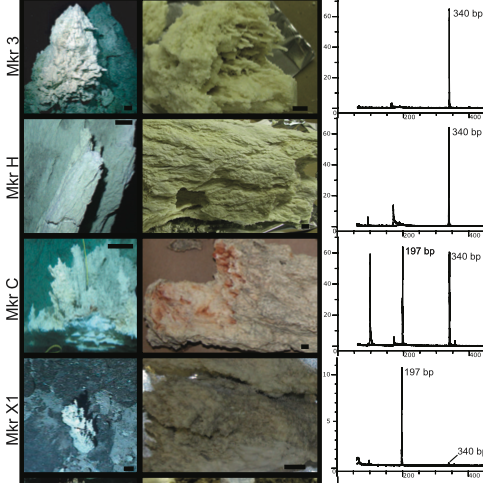Link to online paper: https://journals.asm.org/doi/10.1128/AEM.00574-06
Abstract
ABSTRACT Hydrothermal venting and the formation of carbonate chimneys in the Lost City hydrothermal field (LCHF) are driven predominantly by serpentinization reactions and cooling of mantle rocks, resulting in a highly reducing, high-pH environment with abundant dissolved hydrogen and methane. Phylogenetic and terminal restriction fragment length polymorphism analyses of 16S rRNA genes in fluids and carbonate material from this site indicate the presence of organisms similar to sulfur-oxidizing, sulfate-reducing, and methane-oxidizing Bacteria as well as methanogenic and anaerobic methane-oxidizing Archaea . The presence of these metabolic groups indicates that microbial cycling of sulfur and methane may be the dominant biogeochemical processes active within this ultramafic rock-hosted environment. 16S rRNA gene sequences grouping within the Methylobacter and Thiomicrospira clades were recovered from a chemically diverse suite of carbonate chimney and fluid samples. In contrast, 16S rRNA genes corresponding to the Lost City Methanosarcinales phylotype were found exclusively in high-temperature chimneys, while a phylotype of anaerobic methanotrophic Archaea (ANME-1) was restricted to lower-temperature, less vigorously venting sites. A hyperthermophilic habitat beneath the LCHF may be reflected by 16S rRNA gene sequences belonging to Thermococcales and uncultured Crenarchaeota identified in vent fluids. The finding of a diverse microbial ecosystem supported by the interaction of high-temperature, high-pH fluids resulting from serpentinization reactions in the subsurface provides insight into the biogeochemistry of what may be a pervasive process in ultramafic subseafloor environments.
